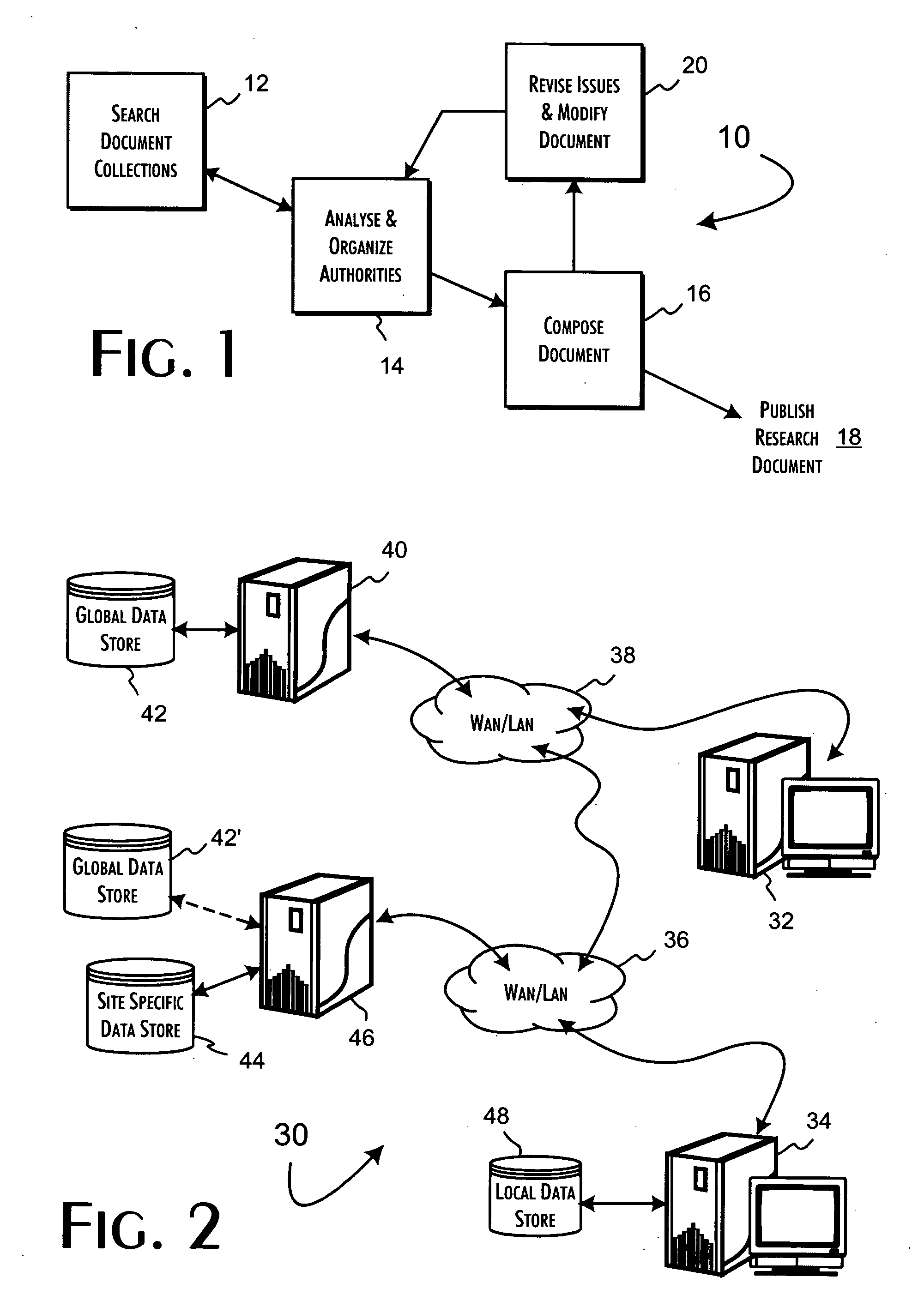System and methods for analytic research and literate reporting of authoritative document collections
a document collection and analytic research technology, applied in the field of knowledge management and information retrieval systems, can solve the problems of inherently limited practical utility of categorizing to the relevant focus and level, several rather substantial limitations of such systems, and difficulty in properly enabling researchers to perform research, so as to facilitate the evaluation and selection of conceptually relevant information, facilitate navigation and selection of relevant information, and facilitate the effect of categorizing
- Summary
- Abstract
- Description
- Claims
- Application Information
AI Technical Summary
Benefits of technology
Problems solved by technology
Method used
Image
Examples
Embodiment Construction
[0042] The present invention provides a cohesive system or framework for efficiently performing information research against the typically complex document collections that utilize authoritative citations to internally organize and substantiate the information represented by the collection. Such authoritative document collections, including as exemplary the various scientific and legal document collections, characteristically employ a consistent system of internal cross-references to and into other documents to establish authoritative support for assertions made and conclusions reached in a current document. In accordance with the present invention, utilization of the full information content of authoritative statements, defined for purposes of the present invention as including assertions and citations, enables the knowledge contained within a document collection to be efficiently and effectively accessed and utilized. Although citation networks have been used as a basis for explor...
PUM
 Login to View More
Login to View More Abstract
Description
Claims
Application Information
 Login to View More
Login to View More - R&D
- Intellectual Property
- Life Sciences
- Materials
- Tech Scout
- Unparalleled Data Quality
- Higher Quality Content
- 60% Fewer Hallucinations
Browse by: Latest US Patents, China's latest patents, Technical Efficacy Thesaurus, Application Domain, Technology Topic, Popular Technical Reports.
© 2025 PatSnap. All rights reserved.Legal|Privacy policy|Modern Slavery Act Transparency Statement|Sitemap|About US| Contact US: help@patsnap.com



